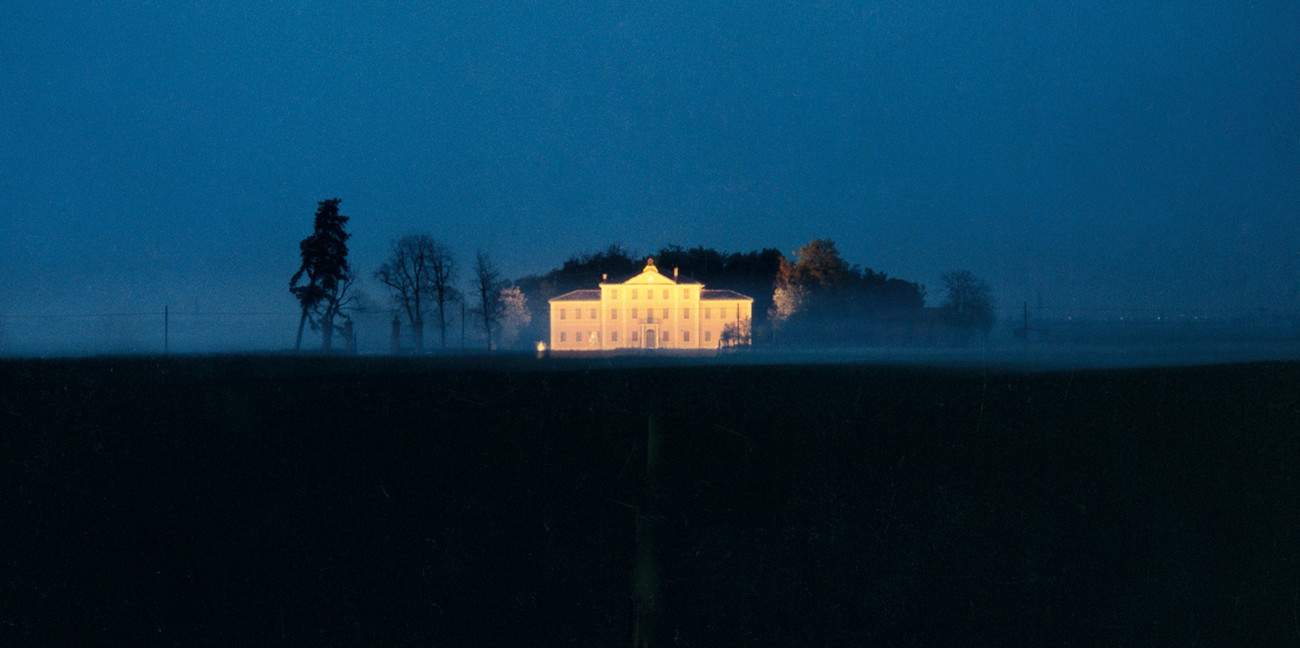From April 26, 2024 to March 2, 2025, the Palazzo dei Musei in Reggio Emilia will host the exhibition Luigi Ghirri. Passage Zones. Discrete semi-darkness in the works of Mario Airò, Paola Di Bello, Paola De Pietri, Gregory Crewdson, Stefano Graziani, Franco Guerzoni, Armin Linke, Amedeo Martegani, and Awoiska van der Molen, curated by Ilaria Campioli. The exhibition, which is part of the Fotografia Europea program, intends to continue the reflection on Luigi Ghirri through a broad path centered on the theme of darkness, recounting the important role darkness plays in the collective imagination and as a source of inspiration in photography and beyond.
On display will be 56 images of nocturnal settings that Ghirri made during the course of his production and that tell of places that are “lit in a provisional way, spaces that live their own discrete semi-darkness and that only temporarily become festively luminous.” For Ghirri, therefore, it is the glimmers, flashes and small intermittences, for example those of fireflies, that express the best modes of illumination, as they keep intact the perception of that darkness too often erased in favor of a “film set lighting where all the magic and charm of light seems to disappear.”
If darkness is at the center of Ghirri’s research, the “micro-rottures” generated by sudden illuminations capable of revealing that relationship between light and darkness concealed in nature weave a dialogue that expands reflection thanks to the projects of a series of important contemporary authors of international renown: it is the semi-darknesses of Mario Airò, Gregory Crewdson, Paola Di Bello, Paola De Pietri, Stefano Graziani, Franco Guerzoni, Armin Linke, Amedeo Martegani and Awoiska van der Molen who, in their heterogeneity of approaches and gazes, investigate the transition zones between darkness and light.
The relationship between light and dark constitutes a central theme in the history of the photographic process itself. Moreover, the enfranchisement of darkness, made possible by the various techniques of artificial lighting, has allowed the medium’s possibilities to be extended not only in terms of its ability to produce images itself, but by expanding its use in dark or dimly lit places such as catacombs and caves, previously inaccessible to the photographer’s eye.
The ideal thread running through the reflections proposed by the various projects of the authors in the exhibition is La photographie à la lumière artificielle, a work published in 1914 by Albert Londe, a pioneer of chronophotography and scientific photography, which stands as a compendium of the many pre-electric lighting techniques for use in photography. The manual, of which the exhibition displays an original edition copy, reveals a deep fascination with light, investigated in its material-alchemical components and in relation to that darkness from which light magically emerges only to return and dissolve. The work also testifies to a great enthusiasm for the new possibilities given byartificial lighting.
On the occasion of the exhibition, Palazzo dei Musei declines the theme of darkness and night with Passaggi notturni (April 26-September 29, 2024), curated by Silvia Chicci, which, through the eye of phototraps, investigates the nocturnal activity of animals in the woods. Produced in collaboration with the National Park of the Tuscan-Emilian Apennines, the exhibition builds a dialogue with the Museum’s naturalistic collections by enhancing them through a novel reading.
Twilight and night are for many animal species the privileged time to enter into activity. As darkness falls, prey and predators come out of their shelters to feed and hunt. Silent and discreet presences, protected by the darkness of night, travel through forests, trails and fields pushing to the outskirts of cities, eluding the gaze of man. Just beyond the transition zones between light and dark, between man and nature dear to Luigi Ghirri, it is the phototrap that documents an active and populated nocturnal world. The study conducted over the past thirty years by the staff of the current National Park of the Tuscan-Emilian Apennines, aimed at documenting also through phototrapping the return and expansion from the ridge to the plain of the wolf, has allowed the acquisition of thousands of films that document, even at a short distance from the lights of the city, the active presence of wolves, wild boars, badgers, foxes, porcupines, opening the gaze on a night full of “passages.”
The exhibition is promoted by the Municipality of Reggio Emilia (Civic Museums, Panizzi Library) in collaboration with Archivio Eredi Luigi Ghirri, and realized thanks to European Funds from the Emilia-Romagna Region. With the Art Bonus contribution from Iren.
For info: https://www.musei.re.it/sedi/palazzo-dei-musei/
Image: Luigi Ghirri, Bologna (1987)
 |
| Darkness in photography: the Palace of Museums in Reggio Emilia reflects on the theme starting with Luigi Ghirri |
Warning: the translation into English of the original Italian article was created using automatic tools. We undertake to review all articles, but we do not guarantee the total absence of inaccuracies in the translation due to the program. You can find the original by clicking on the ITA button. If you find any mistake,please contact us.